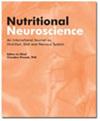韩国人膳食纤维摄入量与抑郁症状发生率之间的可能联系。
IF 3.6
4区 医学
Q2 NEUROSCIENCES
引用次数: 0
摘要
目的:本研究调查了膳食纤维对预防抑郁症状的影响。方法:在一个由 88826 名韩国成年人(男性 57284 人,女性 31542 人)组成的队列中,我们根据膳食纤维摄入量的四分位数对抑郁症状的风险进行了纵向评估,随访时间长达 5.8 年。在评估膳食纤维摄入量时使用了食物频率问卷。抑郁症状采用流行病学研究中心抑郁量表(CES-D)进行评估,其中CES-D≥16定义为抑郁症状。采用考克斯比例危险模型计算抑郁症状的调整危险比(HR)和95%置信区间(HR [95% CI])。结果男性出现抑郁症状的风险随着膳食纤维的增加而显著降低(四分位数 1:参考值;四分位数 2:0.93 [0.87-0.99];四分位数 3:0.91 [0.85-0.98];四分位数 4:0.84 [0.77-0.92])。这种关联在体重指数≥25的男性中更为突出(四分位数 1:参考值,四分位数 2:0.95 [0.86-1.06],四分位数 3:0.88 [0.79-0.99],四分位数 4:0.84 [0.73-0.97])。在对体重指数进行亚组分析时,女性膳食纤维摄入量四分位组与抑郁症状风险之间没有显示出明显的关联。膳食纤维对抑郁症状的保护作用可能因性别和肥胖程度而异。本文章由计算机程序翻译,如有差异,请以英文原文为准。
The possible association of dietary fiber intake with the incidence of depressive symptoms in the Korean population.
OBJECTIVES
This study investigates the effect of dietary fiber on the prevention of depressive symptoms.
METHODS
In a cohort of 88,826 Korean adults (57,284 men and 31,542 women), we longitudinally evaluated the risk of depressive symptoms according to quartiles of dietary fiber intake for 5.8 years of follow-up. A food frequency questionnaire was used in evaluating dietary fiber intake. Depressive symptoms were assessed by the Center for Epidemiological Studies-Depression (CES-D) scale, in which CES-D ≥ 16 was defined as depressive symptoms. The Cox proportional hazards model was used to calculate the adjusted hazard ratio (HR) and 95% confidence intervals (CI) for depressive symptoms (adjusted HR [95% CI]). Subgroup analysis was performed for gender and BMI (≥25 or <25).
RESULT
In men, the risk of depressive symptoms significantly decreased with the increase of dietary fiber (quartile 1: reference, quartile 2: 0.93 [0.87-0.99], quartile 3: 0.91 [0.85-0.98] and quartile 4: 0.84 [0.77-0.92]). This association was more prominently observed in men with BMI ≥ 25 (quartile 1: reference, quartile 2: 0.95 [0.86-1.06], quartile 3: 0.88 [0.79-0.99] and quartile 4: 0.84 [0.73-0.97]). Women did not show a significant association between quartile groups of dietary fiber intake and the risk of depressive symptoms across subgroup analysis for BMI.
CONCLUSION
High intake of dietary fiber is potentially effective in reducing depressive symptoms in Korean men. The protective effect of dietary fiber on depressive symptoms may vary by gender and obesity.
求助全文
通过发布文献求助,成功后即可免费获取论文全文。
去求助
来源期刊

Nutritional Neuroscience
医学-神经科学
CiteScore
8.50
自引率
2.80%
发文量
236
审稿时长
>12 weeks
期刊介绍:
Nutritional Neuroscience is an international, interdisciplinary broad-based, online journal for reporting both basic and clinical research in the field of nutrition that relates to the central and peripheral nervous system. Studies may include the role of different components of normal diet (protein, carbohydrate, fat, moderate use of alcohol, etc.), dietary supplements (minerals, vitamins, hormones, herbs, etc.), and food additives (artificial flavours, colours, sweeteners, etc.) on neurochemistry, neurobiology, and behavioural biology of all vertebrate and invertebrate organisms. Ideally this journal will serve as a forum for neuroscientists, nutritionists, neurologists, psychiatrists, and those interested in preventive medicine.
 求助内容:
求助内容: 应助结果提醒方式:
应助结果提醒方式:


